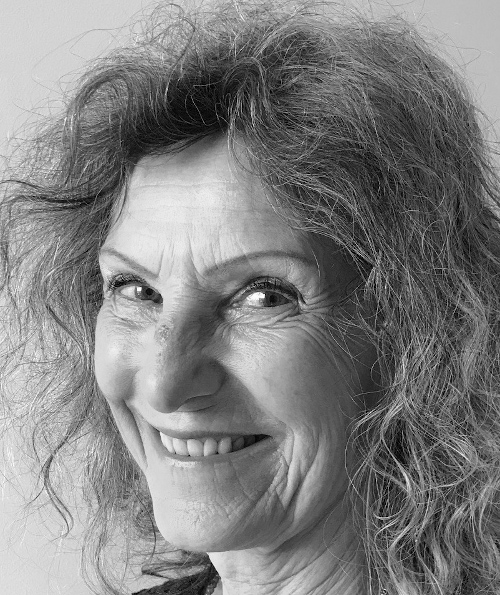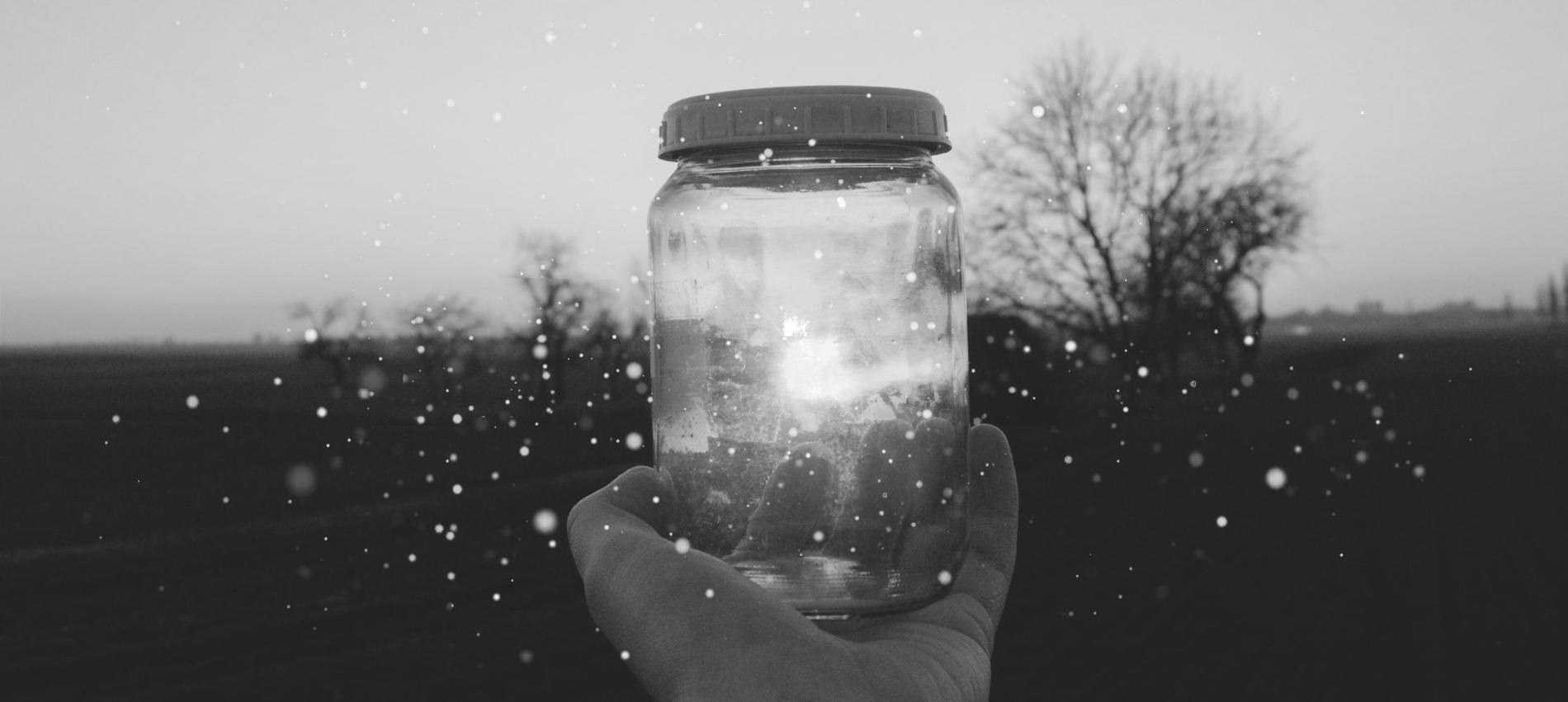News and Tools for
Happiness, Love, and Wisdom
volume 14.2 • April 2020
In This Issue
Suffering and Happiness
© 2020, Rick Hanson, PhD
Excerpted from Neurodharma: New Science, Ancient Wisdom, and Seven Practices of the Highest Happiness. Reprinted with permission from Penguin Random House. This book explores how to use practical brain science to steady the mind, warm the heart, rest in fullness, be wholeness, receive nowness, open into allness, and find timelessness.
* * *
What is in this mind, and what can we do about it? I grew up in a loving family in an American suburb; compared to many, I was very fortunate. Yet most of my memories as a child include a sense of much unnecessary unhappiness around me, in both the grownups and the kids. Nothing terrible, but a lot of tension, bickering, worry, and strain. As I grew older, left home, caught the wave of the human potential movement in the 1970’s, and eventually became a psychologist, I learned that what had seemed like my own private unhappiness was in fact very common. It takes different forms, from the intense pain of trauma to a subtle feeling of unfulfillment. And between these extremes lie considerable anxiety, hurt, sorrow, frustration, and anger.
In a word, there is suffering, named by the Buddha as the First Noble Truth of human existence. This is not the whole of life. There are also love and joy, laughing with friends, and the comfort of a warm sweater on a cold day. Yet each of us must face the truth of suffering some of the time, and many of us face it all of the time.
Poignantly, much of our suffering is added to life. We add it when we worry needlessly, criticize ourselves to no good purpose, or replay the same conversation over and over again. We add it when we freeze up around an authority figure or feel ashamed of some minor fault. Life has unavoidable physical and emotional pains, and then we add suffering to them: thus the saying, “pain is inevitable, suffering is optional.” For example, we get embarrassed about having an illness or drink too much to numb old wounds.
Greetings
The Wise Brain Bulletin offers skillful means from brain science and contemplative practice – to nurture your brain for the benefit of yourself and everyone you touch.
The Bulletin is offered freely, and you are welcome to share it with others. Past issues are posted at http://www.wisebrain.org/tools/wise-brain-bulletin.
Rick Hanson, PhD, edits the Bulletin. Michelle Keane is its managing editor, and it’s designed and laid out by the design team at Content Strategy Online.
To subscribe, go to http://www.wisebrain.org/tools/wise-brain-bulletin.
This add-on suffering is not accidental. It has a source: “craving”, the sense of something missing, something wrong, something we must get. Most craving does not look like an addict searching for a fix. It includes getting attached to our own point of view, driving toward goals that are not worth the price, and holding onto grievances with others. It is chasing pleasure, pushing away pain, and clinging to relationships. This is the Buddha’s Second Noble Truth – but happily we’re not stuck there. Because we are the ones who make much of our own suffering, we are also the ones who can make it come to an end. This hopeful possibility is the Third Noble Truth, and the Fourth Noble Truth describes a path of practice that fulfills this promise.
These four truths begin with a clear-eyed look at the realities of life, whether in rural India thousands of years ago or in high-tech cities today. I grew up in Los Angeles, and in its entertainment culture and then later in parts of the self-help world, I’ve seen a fair amount of happy-smiley pretense, fake it ‘til you make it. But we need to be honest enough and strong enough to see the truth of our experience, the whole truth, including the discontent, loneliness, and unease, and the unfulfilled longings for a reliable deep well-being. I once asked the teacher Gil Fronsdal what he did in his own practice. He paused and then smiled and said, “I stop for suffering.” This is where practice begins, facing suffering in ourselves and others.

But it’s not where practice ends. The Buddha himself was described as “the happy one.” As I teach in my work and my book Neurodharma, wholesome enjoyable experiences such as kindness are skillful means for both ordinary functioning and full awakening. When suffering falls away, what is revealed is not a big blank but a natural sense of gratitude, good wishes for others, freedom, and ease.
ABOUT THE AUTHOR

Rick Hanson, PhD is a psychologist, Senior Fellow of UC Berkeley’s Greater Good Science Center, and New York Times best-selling author. His books have been published in 29 languages and include Neurodharma, Resilient, Hardwiring Happiness, Buddha’s Brain, Just One Thing, and Mother Nurture- with 900,000 copies in English alone. His free weekly newsletter has 150,000 subscribers and his online programs have scholarships available for those with financial need. He’s lectured at NASA, Google, Oxford, and Harvard, and taught in meditation centers worldwide. An expert on positive neuroplasticity, his work has been featured on the BBC, CBS, NPR, and other major media. He began meditating in 1974 and is the founder of the Wellspring Institute for Neuroscience and Contemplative Wisdom. He loves wilderness and taking a break from emails.
Virus Covid-19
© 2020 Cordula Gestrich
A virus brain-less
Seeking hosts for survival
Humans agitating …… headless?
Or
A virus tiny
Teaching a lesson so raw
What really matters
Or
A virus ov’rwhelming
Born out of ancient stardust
Planets still humming
Or
A virus unknown
Humbleness of not-knowing
Trusting lovingly
Or
A virus so potent
Destroys one’s lungs silently
ME – the next to die
Or
A virus teaching
Move the rock closing your heart
Wafting scents of life
ABOUT THE AUTHOR

Cordula Gestrich is a longtime meditator living in Germany. She works as a psychotherapist, trained in Gestalt therapy, mostly with refugees, survivors of war and violence since the times of war in former Yugoslavia. Her aim has been focused since on body work, expressive and meditative ways to that what is hurt, yet invulnerable. As “CORdoula” she discovered writing poems and haikus mostly in English inspired while being in teacher trainings for Life/Art Process, MSC, Mindful Meditation Teacher Training as well as PNT. She resources in long walks with her dog, listening and talking to nature, dancing, singing, doing calligraphy, and loves teaching meditation classes as an art of the HEart. www.gestaltpraxis.de.
Self-Compassion Practices for COVID-19
© 2020 Kristin Neff, PhD and Chris Germer, PhD
As the coronavirus spreads around the world, already in over 80 countries, we are all being affected in some way. Travel is being curtailed, the stock market is tumbling, some schools and workplaces are temporarily closing, and hand sanitizer costs as much as $250 a bottle on Amazon. Closer to home, a Mindful Self-Compassion program that Chris was scheduled to teach in Hong Kong was canceled because the venue became a quarantine site. Kristin has had to quell the fears of her son, Rowan, who is worried about going to school. Epidemiologists are trying to make sense of the situation, but many questions remain: How can we slow the spread of the virus? What will be the impact of this global epidemic?
“Global” is the key word. Many of the problems we are now facing are global in nature, such as the warming planet, economic inequality, and now a contagious virus. The coronavirus is pointing out just how interdependent we are, with disrupted supply chains slowing down manufacturing and international travel spreading the virus.
Globalization is a fact – the only choice is whether we will work together to solve our problems. In our view, the choice is between reacting with fear or responding with kindness.
Nationalists are seizing upon the coronavirus to reinforce the closed borders agenda, but others are working across borders to solve the problem, such as a new collaboration between Harvard scientists and their Chinese colleagues to develop a COVID-19 vaccine.
What can each of us do? This is where self-compassion comes in. Self-compassion boosts the immune system, it reduces anxiety, and it’s the easiest way to keep our hearts open to others. Some measure of fear is a healthy response to a contagious virus, of course. We want to respond to the contagion in a wise manner – with preventive measures that benefit ourselves and others.
In the case of COVID-19, taking steps to not to contract the virus is taking care of others.

Many people have asked us how self-compassion practice might help them get through this challenging time. Everyone has been affected to some degree by the coronavirus, perhaps by anxiety about the invisible threat to our communities, loneliness from self-quarantine, economic hardship, or difficulties when we contract the virus ourselves or need to care for sick people.
Below are 10 practices from the The Mindful Self-Compassion Workbook (guided meditations are available here for those practices marked with an asterisk (*).
- Self-Compassion Break* – The 3 components of self-compassion are a powerful recipe for regulating difficult emotions. The first component – mindfulness – helps us disentangle from what’s bothering us. The second component – common humanity – is an antidote to the loneliness that may come with social distancing. When we recall that we’re not alone no matter what we’re going through, things become more bearable. The third component of self-compassion – self-kindness – is an antidote to fear. Kindness regulates fear through connection and warmth, similar to what we might experience with a dear friend.
- Soothing Touch – We are less likely to receive physical expressions of kindness when we are in self-quarantine but we can still comfort ourselves with touch. Don’t be shy about offering yourself a hug, or by gently placing a hand over your heart, when you need it the most. (Just be mindful about touching your face, please.)

- Giving and Receiving Compassion* – Although we need to physically distance ourselves from others because of the coronavirus, we don’t need to emotionally distance ourselves. Connection feels good. We can stay in compassionate connection with others by following our breath – breathing compassion in for ourselves and out for others. This can be practiced at home or with others, on the cushion or in caregiving settings.
- Being with Difficult Emotions* –Isolation is not natural for human beings. Just being alone with ourselves for an extended period of time usually brings up challenging emotions. Labeling what we’re feeling while we’re feeling it calms the body, finding the emotion in the body anchors the experience, and responding to ourselves with compassion is the connection we’ve probably needed all along.
- Soles of the Feet – This practice anchors our awareness in the present moment when we feel emotionally overwhelmed. The pandemic can be re-traumatizing for some people, for example, if feeling all alone or unsafe triggers traumatic memories. When we feel overwhelmed, it may be helpful to anchor our awareness in the sensations of our feet on the floor. We can redirect our attention away from our thoughts to the point of contact between our body and the earth, helping to ground and settle ourselves
- Affectionate Breathing* – Another helpful practice for helping to ground ourselves when we feel overwhelmed is tuning in to the soothing rhythm of the breath. We can allow ourselves to be caressed by the gentle internal rocking motion of the breath in a way that is calming and soothing.
- Self-Compassion in Daily Life – We don’t need to practice meditation to experience self-compassion. Simply asking ourselves, “How do I care for myself already?” is a self-compassionate act, and actually doing something nice for oneself is even better. For example, when we’re sequestered in our homes, we can still listen to music, dance, read a book, Skype with friends, or play games with family members.

- Compassionate Body Scan* – When we find ourselves scanning for signs of the coronavirus in our own bodies, the body begins to feel like an alien and we need to befriend it. We also need to remain friends with our bodies when they are stricken with the virus because the body is doing the best it can and it needs our support. The Compassionate Body Scan is a way to become more intimate and comfortable with our bodies no matter what condition we may be in.
- Core Values – The usual ways that we find meaning in life are likely to be interrupted by social distancing. That doesn’t mean that we have to let go of what is most meaningful to us. If you found meaning by providing financially for your family, perhaps you can still provide for your family – emotionally – until you return to work? If you enjoyed meeting with friends, perhaps you can still meet with them online, maybe even with greater interest and understanding? Remaining connected to our core values and finding ways to stay true to them in the midst of disruption is an act of self-care.
- Savoring and Gratitude – Sooner or later, we will all become virus-weary and yearn for more joy in life. Fortunately, joy is close at hand if we give ourselves permission to enjoy the simple things we still have. Savoring a nice meal is a way to do that, or by taking yourself on a Sense and Savor Walk in the fresh air. This practice involves letting yourself fully enjoy and take in what is beautiful or interesting to you – the bark of a tree, bird song, the smell of a flower, seeing the world with fresh eyes. Gratitude is another way of cultivating joy – noticing the small things that enrich our lives that we tend to overlook–running water, morning sunlight, chopping vegetables. The list is endless.
Of course, a single self-compassion practice will not immediately change your life. Self-compassion is learned slowly. The fruit of self-compassion practice is learning how to hold our struggles and ourselves in a loving embrace, just as we are. Self-quarantine can be like a retreat, albeit involuntary, and it’s an excellent time learn the practice of self-compassion.
Like any crisis, the COVID-19 virus is also an opportunity.
For example, you might find a silver lining in the limitations that the virus imposes on your life—an opportunity to step out of your usual routine. Do you have more time to spend with your family? Is this your chance to read a book that you have gazed at longingly for months?

In the big picture, there may also be a silver lining. Back in 2016, as Chris was taking an Uber back to the Sydney airport, he asked the driver, an elderly man from India, what he thought about the political situation in America. The driver’s answer was unforgettable:
“Human history goes through cycles of expansion and contraction, but the periods of expansion are longer than the periods of contraction.”
“Why are the expansion periods longer?” Chris asked.
The driver replied, “Because the human heart prefers expansion.”
Due to globalization, it seems that threats like the coronavirus will only increase as the years go by. What kind of world do we want to create as we navigate through them? Will our hearts expand or contract as they bump into each new challenge? A global commitment to living compassionately can make all the difference and self-compassion seems like an excellent way to start. Shall we?

ABOUT THE AUTHORS
 Kristin Neff received her doctorate from the University of California at Berkeley, and is currently an Associate Professor of Educational Psychology at the University of Texas at Austin. She is a pioneer in the field of self-compassion research, creating a scale to measure the construct over fifteen years ago, and is co-developer of an empirically supported training program called Mindful Self-Compassion, which is taught by thousands of teachers worldwide. In addition to writing numerous academic articles and book chapters on the topic, she is author of Self-Compassion: The Proven Power of Being Kind to Yourself, The Mindful Self-Compassion Workbook, and Teaching the Mindful Self-Compassion Program: A Guide for Professionals. For more information on self-compassion, including a self-compassion test, research articles, practices, and Dr. Neff's teaching schedule, go to www.self-compassion.org.
Kristin Neff received her doctorate from the University of California at Berkeley, and is currently an Associate Professor of Educational Psychology at the University of Texas at Austin. She is a pioneer in the field of self-compassion research, creating a scale to measure the construct over fifteen years ago, and is co-developer of an empirically supported training program called Mindful Self-Compassion, which is taught by thousands of teachers worldwide. In addition to writing numerous academic articles and book chapters on the topic, she is author of Self-Compassion: The Proven Power of Being Kind to Yourself, The Mindful Self-Compassion Workbook, and Teaching the Mindful Self-Compassion Program: A Guide for Professionals. For more information on self-compassion, including a self-compassion test, research articles, practices, and Dr. Neff's teaching schedule, go to www.self-compassion.org.
 Christopher Germer, PhD is a clinical psychologist and co-developer of the Mindful Self-Compassion (MSC) program that has been taught to over 100,000 people worldwide. He is author of The Mindful Path to Self-Compassion, co-author of Teaching the Mindful Self-Compassion Program, and The Mindful Self-Compassion Workbook, and co-editor of Mindfulness and Psychotherapy, and Wisdom and Compassion in Psychotherapy. His next book, expected in 2021, is on self-compassion as an antidote to shame. He is a lecturer on psychiatry (part-time) at Harvard Medical School, and has been integrating the principles and practices of meditation into psychotherapy since 1978. He is a founding faculty member of the Institute for Meditation and Psychotherapy and the Center for Mindfulness and Compassion, Cambridge Health Alliance, Harvard Medical School, and maintains a small private practice in Arlington, Massachusetts, USA, specializing in mindfulness and compassion-based psychotherapy. He is also a committed student of insight meditation (vipassana) and co-director of the annual Meditation and Psychotherapy conference at Harvard Medical School/Cambridge Health Alliance.
Christopher Germer, PhD is a clinical psychologist and co-developer of the Mindful Self-Compassion (MSC) program that has been taught to over 100,000 people worldwide. He is author of The Mindful Path to Self-Compassion, co-author of Teaching the Mindful Self-Compassion Program, and The Mindful Self-Compassion Workbook, and co-editor of Mindfulness and Psychotherapy, and Wisdom and Compassion in Psychotherapy. His next book, expected in 2021, is on self-compassion as an antidote to shame. He is a lecturer on psychiatry (part-time) at Harvard Medical School, and has been integrating the principles and practices of meditation into psychotherapy since 1978. He is a founding faculty member of the Institute for Meditation and Psychotherapy and the Center for Mindfulness and Compassion, Cambridge Health Alliance, Harvard Medical School, and maintains a small private practice in Arlington, Massachusetts, USA, specializing in mindfulness and compassion-based psychotherapy. He is also a committed student of insight meditation (vipassana) and co-director of the annual Meditation and Psychotherapy conference at Harvard Medical School/Cambridge Health Alliance.
Skillful Means: Tracking Your Mood
Your Skillful Means, sponsored by the Wellspring Institute, is designed to be a comprehensive resource for people interested in personal growth, overcoming inner obstacles, being helpful to others, and expanding consciousness. It includes instructions in everything from common psychological tools for dealing with negative self talk, to physical exercises for opening the body and clearing the mind, to meditation techniques for clarifying inner experience and connecting to deeper aspects of awareness, and much more.
Tracking Your Mood

PURPOSE/EFFECTS
Often our moods can change so quickly and automatically that we are unaware of what actually caused them. Keeping track of your moods in a mood log can help you reflect on the factors and situations that affect your emotions. Discovering the thoughts and situations that are linked to low moods can help you anticipate what factors (such as certain people, times of day, thoughts) are most challenging for you. With the information learned from tracking your mood you can gain insight into your habitual reactions to triggering events and work with bringing awareness to your responses so that they are not as automatic.
Method
Summary
A few times a day, note your mood when you are upset and describe the situation (time, location, what is going on).
Long Version
If possible, carry around a notebook with you to use for recording your mood.
Perspectives on Self-Care
Be careful with all self-help methods (including those presented in this Bulletin), which are no substitute for working with a licensed healthcare practitioner. People vary, and what works for someone else may not be a good fit for you. When you try something, start slowly and carefully, and stop immediately if it feels bad or makes things worse.
- When you become aware that you are experiencing a difficult emotion note your situation, including the day, time, location, and what is occurring.
- See if you can then become aware of and note what emotions you are experiencing (e.g. sad, lonely, scared, irritated) and rate their intensity from 1-100%.
- Begin to pay attention to any thoughts that may be automatically occurring and see if you can notice and record the most common and gripping thoughts.
- Once you have written down a few thoughts, examine their accuracy. Often when we are in a low mood our thoughts are unrealistically negative and pessimistic. If you can, begin to challenge the accuracy of your thoughts and create alternative, more realistic explanations.
- If you have trouble challenging your thoughts, see Disputing Negative Thoughts and Common Errors in Thinking for help.
- Once you have finished, reassess your mood and see if it has changed.
- After a few days or weeks of tracking your mood, begin to examine your mood logs and look for any patterns or trends, such as times of day or specific people or events that are associated with low moods.
- Becoming aware of this information can be very helpful. You may eventually come up with alternative possibilities and responses to prevent yourself from being automatically dragged into low moods.
- You may also find ways to expect and prepare yourself for dealing with difficult situations and people. This can lead to feeling more in control of your mood and your responses.
HISTORY
Keeping track of one’s daily mood and challenging automatic thoughts is a primary component of cognitive behavioral therapy (CBT). CBT was created and expanded upon by psychologists Albert Ellis and Aaron Beck in the 1950’s and 60’s. Additionally, the method presented here was adapted from the CBT mood logs created by Dr. David Burns in his book The Feeling Good Handbook, and from psychologists Christine Padesky and Dennis Greenberger’s book, Mind Over Mood.
You can read more about the history of CBT here: http://www.nacbt.org/historyofcbt.htm
CAUTIONS
It is not always easy to track your mood during various situations each day and please do not get discouraged or beat up on yourself if you are unable to record your moods with great consistency. Just beginning to pay attention to the various factors that influence your mood can be very helpful.
Additionally, becoming aware of your automatic thoughts can be illuminating but also unsettling if you notice that the content of your thoughts is very negative. Be aware of any tendency to criticize yourself for having critical or harsh thoughts and instead see if you can practice self-compassion for feeling the difficult emotion(s).
SEE ALSO
Emotional Awareness Meditation
Disputing Negative Thoughts
EXTERNAL LINKS

Fare Well
May you and all beings be happy, loving, and wise.

